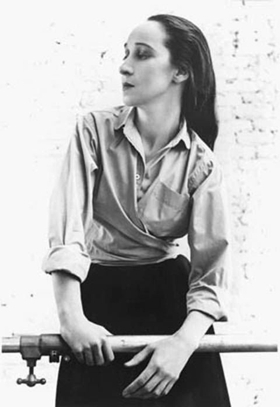BWW Dance Review: Anna Sokolow

Anna Sokolow, once a name to be reckoned with is, unfortunately, no longer such a name. Watching the performance of March 10, 2018 at the Actors Fund Art Center in Brooklyn, I asked myself what had made Sokolow, known for her daring dance imagery, her psychological dance probing and her determination to dig beneath the choreography's soil, a dance firebrand of the 1930s-1970s. The evening had a lulling feeling; can it be that this is the reason that Sokolow is so seldomly revived? Perhaps different dancers?
I don't think so. Looking through the New York Times historical archives I could not find reviews of two dances on the program: Sokolow's solo, "Poem,", choreographed in 1995, and compellingly danced by Jennifer Conley; or Leni Wyiliams' "Sweet in the Morning," choreographed in 1992 and danced with just the right lightness and insouciance by Clarence Brooks. Light, nice pieces. But in need of a revival? Where have these works been seen before? I'd like to know.
All the other works on the program were by Anna Sokolow in different periods of her choreographic and teaching careers. Some had direct themes, which surprised me since I did not do any in-depth research before the performance. I preferred if the works spoke to me directly, as I had never seen any of them before in my dance going career.
The rest of the evening's choreography consisted of Sokolow's choreography, most rarely seen.
"Moods," set to György Ligeti's "10 Pieces for Wind Quintet" is for seven dancers, who express what seems to be every emotion known to mankind. The dance reminded me so much-as most of what I saw that night-of a Jerome Robbins clone. Harsh words, I know, but whereas Robbins, especially in his "Moves," is able to choreograph and depict his dancers in various states of joy and despair, here it never seems to come to any conclusion as to why the dancers are performing it.
'Preludes," choreographed in 1984 to the music of George Gershwin, evokes the dances of the 1930s. Yet, like so many dances I have seen-and there have been many of them-this kind of nostalgia does not play well. Perhaps Sokolow was remembering her own past. It's hard to say, and there were no notes in the program explaining anything.
The same advice could apply to Sokolow's "Dreams," choreographed in 1961 to various pieces by Johann Sebastian Bach, Teo Macero and Anton von Webern. Inspired by bad dreams she was having, this became a work about the Holocaust. While watching this I began thinking in my mind: Why are these people twitching, falling down. Where am I? It was somber, but there was also something to me that spelled lost souls. I've seen enough lost souls. But to not include any background information, to have someone sitting there who is not acquainted with almost any of Sokolow's work spend twenty minutes pondering the whole thing was a waste of time. Couldn't anyone else have thought about this? The Holocaust is a subject beyond the imaginable, and to have it appear as just another work, did not say much for the producers. I don't need it to be spelled out, but just some information.
I was glad to have seen some of Sokolow's work. I wonder what I would feel at a second showing. I will leave that to the future--here's hoping.
Comments
.png)
|
.png)
|
Videos


